Taiwan at a Tipping Point
Taiwan at a Tipping Point
The Democratic Progressive Partys Return to Power
John F. Copper
LEXINGTON BOOKS
Lanham Boulder New York London
Published by Lexington Books
An imprint of The Rowman & Littlefield Publishing Group, Inc.
4501 Forbes Boulevard, Suite 200, Lanham, Maryland 20706
www.rowman.com
Unit A, Whitacre Mews, 26-34 Stannary Street, London SE11 4AB
Copyright 2018 by Lexington Books
Chapter 2: Parts of this chapter were originally published as John F. Copper, Taiwans 2014 Nine-In-One Election: Gauging Politics, the Parties, and Future Leaders, Maryland Series in Contemporary Asian Studies , University of Maryland Carey School of Law 2014, no. 4 (2014).
Chapter 3: Parts of this chapter were originally published as John F. Copper, Taiwans 2016 Presidential/Vice Presidential and Legislative Election: Reflections on the Nature of Taiwans Politics and Shifts Therein, Maryland Series in Contemporary Asian Studies , University of Maryland Carey School of Law 2016, no. 1 (2016).
All rights reserved . No part of this book may be reproduced in any form or by any electronic or mechanical means, including information storage and retrieval systems, without written permission from the publisher, except by a reviewer who may quote passages in a review.
British Library Cataloguing in Publication Information Available
Library of Congress Cataloging-in-Publication Data Available
ISBN: 978-1-4985-6969-9 (cloth : alk. paper)
ISBN: 978-1-4985-6970-5 (electronic)
 The paper used in this publication meets the minimum requirements of American National Standard for Information SciencesPermanence of Paper for Printed Library Materials, ANSI/NISO Z39.48-1992.
The paper used in this publication meets the minimum requirements of American National Standard for Information SciencesPermanence of Paper for Printed Library Materials, ANSI/NISO Z39.48-1992.
Printed in the United States of America
Contents
Taiwans politics have long attracted the attention of observers both at home and abroad. This is largely because its democratization happened under very unique and trying circumstances and the fact it has been almost unanimously seen as a powerful success story.
Taiwans elections, which have been exciting as well as transformational, were the driving force behind its political modernization. In fact, they played an indispensible role in Taiwan becoming a democracy and a democratic system of government functioning on the island.
One of the most important ones happened in 2000; Taiwan experienced for the first time a rotation of ruling parties. Taiwans main opposition party, the Democratic Progressive Party (DPP), won the presidential election and Chen Shui-bian, the DPPs standard-bearer, became the new president.
The Nationalist party or Kuomintang (KMT), which had governed Taiwan from the end of World War II, was ejected from its position of governing. This was a momentous, cum historic, event. Many believed Taiwan was on a new course politically, but also economically, socially, and more.
However, Chens election did not turn out well. The new president governed by playing one ethnic group against the others. Ethnic relations deteriorated. He provoked China by calling for Taiwans independence to solidify his base. He also alienated the United StatesTaiwans protector. Worst of all, Chen and his administration succumbed to large-scale and corrosive corruption.
As a result the KMT won legislative and presidential elections in early 2008 and was back in power again. Ma Ying-jeou became president. In 2010 KMT won a collection of local elections. In 2012 President Ma and the KMT were again victorious in a joint legislative and presidential election.
KMT rule, however, did not satisfy voters either. The global recession in 2008 caused Taiwans economy to falter. A natural disaster, Taiwans largest typhoon in some years, struck and the government did not respond effectively. Further, Ma was an elitist president at a time when populism was growing in Taiwan. The opposition accused Ma and the KMT of ignoring growing income and wealth inequities. This had resonance. They charged that Mas overreaching in promoting unification with China imperiled Taiwans sovereignty. This influenced voters.
As a result the DPP won decisively the collection of local elections in late 2014. Then, in 2016, Tsai Ing-wen, the DPPs candidate, as predicted, was elected president while the DPP achieved a solid majority in the legislature. This constituted Taiwans third party turnover.
In the wake of the 2016 election it appeared that winning at the polls was easy compared to the task of governing given another downward trend in the global economy that impacted Taiwan and serious social and political issues Taiwan faced. Further, Tsai and the DPP had to oversee good relations with China given its importance to Taiwan economically. But the party base did not have much inclination for this.
Pundits thus posed some serious questions: How far has Taiwan gone in becoming a real, mature, or permanent democracy? Has its political culture adjusted? What about its political parties and the party system? Does a turnover of ruling parties bolster its democracy? What are the challenges to Taiwans democracy? What might damage it? Threaten it?
Meanwhile democracies were in a decline mode all over the world. So were capitalist systems. Would Taiwan become a part of this trend? Some salient facts about its post-election politics indicated they might.
In addition, a painful reality was that Taiwan lives under the shadow of the worlds two big powers, the United States and China, and their policies impact Taiwan in almost every way possible. This makes Taiwans option to choose its future on its own and democratically less realistic.
This book is in some ways the sequel to the book the author published in 2014 entitled The KMT Returns to Power. However, the author is not saying deterministically history will repeat itself, though, of course, it sometimes does or oftentimes it looks like it.
The term tipping point in the title of this book suggests that the DPPs return to govern Taiwan was a momentous event but its results were, and are, uncertain. Indeed the election had consequences. But events that followed were also critical. Both President Tsai and her party tried to satisfy too many constituencies and made serious errors in governing. Still the KMT has not shown it is ready to challenge them. At the moment it is difficult to predict what all of this means.
John F. Copper
Introduction
Future historians writing about Taiwan will doubtless record January 16, 2016 as a uniquely important date. On-the-scene observers on that day described the election they witnessed as a transformative, watershed event. Many opined Taiwan would never be the same as a result of what just happened.
What occurred was voters across Taiwan went to the polls to pick a new president and vice president and a new national legislature. The then opposition Democratic Progressive Partys (DPP) presidential candidate, Tsai Ing-wen, and her running mate, Chen Chien-jen, won handily. The DPP was also the easy victor in the legislative part of the election.
This was the second major election victory for the then out-of-power DPP in just over a year. The DPP literally had smashed the ruling Nationalist Party or Kuomintang (KMT) in a collection of local elections in late 2014. Many observers opined this election was the prelude to what followed. Others saw both as mirroring consequential change.
In any case, the feeling in the air in the wake of the 2016 election was that President Tsai was very ready and capable of being a successful president and she would probably be much more than that. Further, the DPP was a different party from a decade earlier and it would shine and would remain in power for some time.
Next page

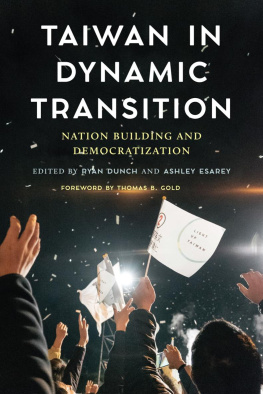
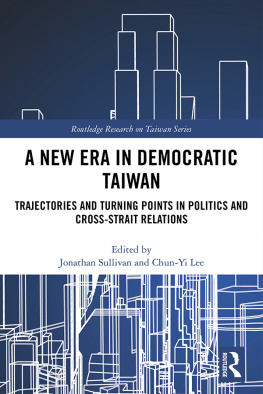
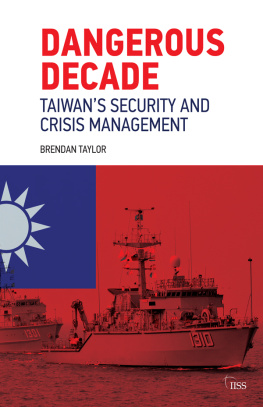
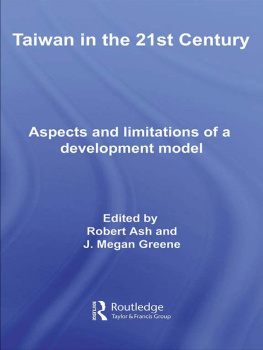


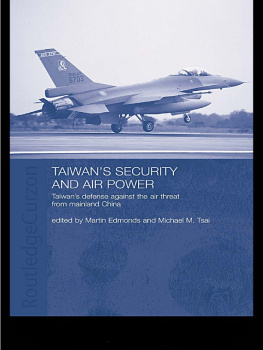
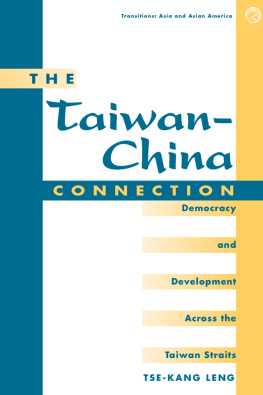

 The paper used in this publication meets the minimum requirements of American National Standard for Information SciencesPermanence of Paper for Printed Library Materials, ANSI/NISO Z39.48-1992.
The paper used in this publication meets the minimum requirements of American National Standard for Information SciencesPermanence of Paper for Printed Library Materials, ANSI/NISO Z39.48-1992.